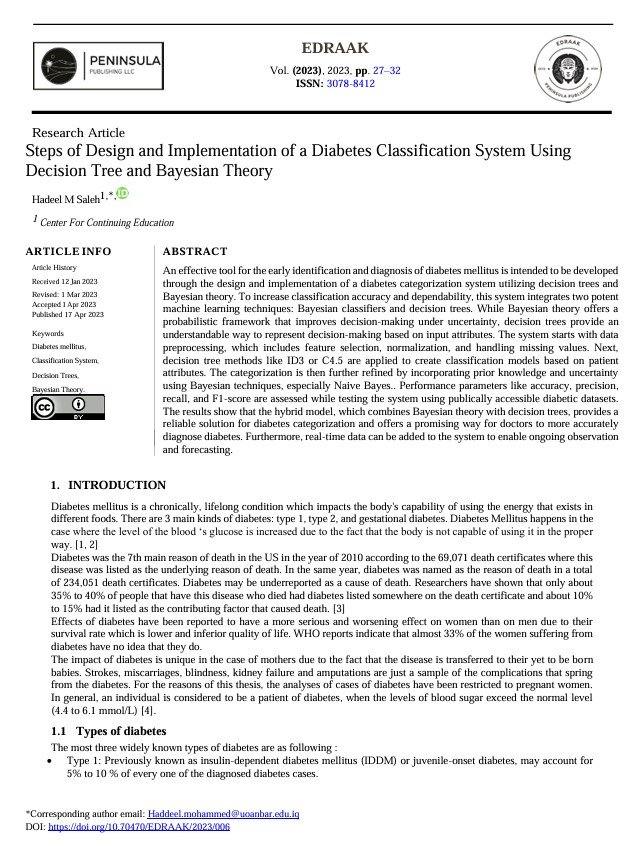Steps of Design and Implementation of a Diabetes Classification System Using Decision Tree and Bayesian Theory
Main Article Content
Abstract
An effective tool for the early identification and diagnosis of diabetes mellitus is intended to be developed through the design and implementation of a diabetes categorization system utilizing decision trees and Bayesian theory. To increase classification accuracy and dependability, this system integrates two potent machine learning techniques: Bayesian classifiers and decision trees. While Bayesian theory offers a probabilistic framework that improves decision-making under uncertainty, decision trees provide an understandable way to represent decision-making based on input attributes. The system starts with data preprocessing, which includes feature selection, normalization, and handling missing values. Next, decision tree methods like ID3 or C4.5 are applied to create classification models based on patient attributes. The categorization is then further refined by incorporating prior knowledge and uncertainty using Bayesian techniques, especially Naive Bayes.. Performance parameters like accuracy, precision, recall, and F1-score are assessed while testing the system using publically accessible diabetic datasets. The results show that the hybrid model, which combines Bayesian theory with decision trees, provides a reliable solution for diabetes categorization and offers a promising way for doctors to more accurately diagnose diabetes. Furthermore, real-time data can be added to the system to enable ongoing observation and forecasting.
Article Details

This work is licensed under a Creative Commons Attribution 4.0 International License.
